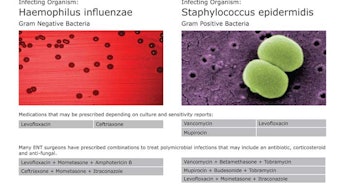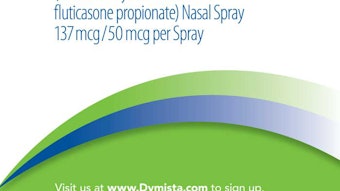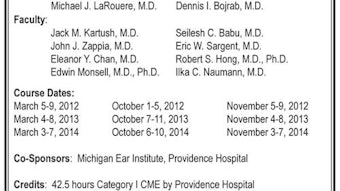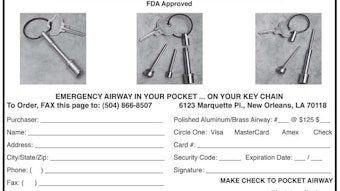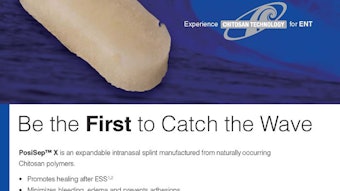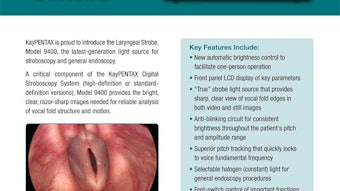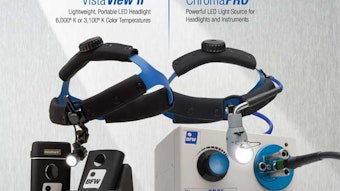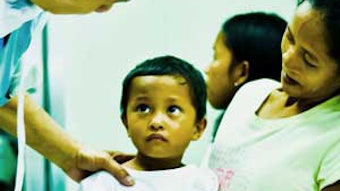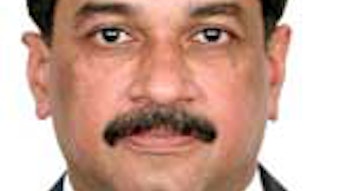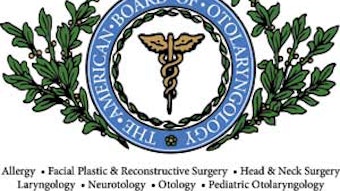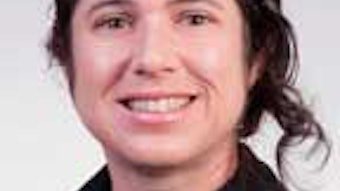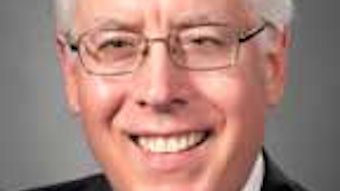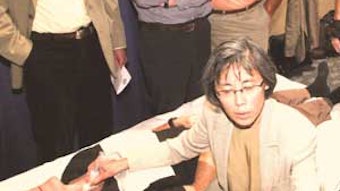Thyroid Mission Trip to Gitwe, Rwanda
Anish Y. Parekh, MD PGY-5 Tufts Medical Center As I completed my fifth year of otolaryngology training at Tufts Medical Center, I had the opportunity to be part of a medical mission team of 15 healthcare workers and volunteers from across the United States to Rwanda, Africa, March 4-11, to perform partial and subtotal thyroidectomies. Jagdish K. Dhingra, MBBS, FRCS, an otolaryngologist from Boston, MA, led the mission team under the auspices of Medical Missions for Children (MMFC). We travelled to Gitwe, a small mountain village located 50 miles southwest of the capital city, Kigali. Due to iodine deficiency in salt and water, multinodular thyroid goiter is endemic in Rwanda. Local physicians lack the training and are ill equipped to deal with large goiters. This was Dr. Dhingra’s sixth annual mission to Gitwe, Rwanda, and during this time he has performed more than 100 partial and subtotal thyroidectomies. In the most recent trip, we performed 26 thyroidectomies. In addition to the thyroid mission, MMFC coordinates an annual cleft lip mission to Gitwe and 13 other annual missions to underdeveloped parts of the world. After landing in Rwanda, the journey to Gitwe is a grueling four-hour van ride from Kigali. The team brought all the administrative, anesthetic, surgical, and PACU supplies and medications necessary for surgery with them to Rwanda. The first day in Gitwe consisted of setting up the operating room and PACU and screening patients at Gitwe Hospital. Patients had been screened six months earlier by a surgeon and a nurse. In addition to word of mouth, radio announcements helped us reach remote villagers about our mission. Patients had traveled from many miles away, often walking several hours a day to reach the hospital. The primary complaints were pressure symptoms. During five days, 26 patients underwent partial or subtotal thyroidectomy. Excision specimens routinely measured more than 5 cm in largest diameter with the largest specimen measuring 12 cm and weighing about 500 grams. Postoperatively, patients stayed in the hospital until drains were removed. The trip was a unique learning experience and a great success overall. Planning for next year’s mission is already under way.
Anish Y. Parekh, MD
PGY-5 Tufts Medical Center
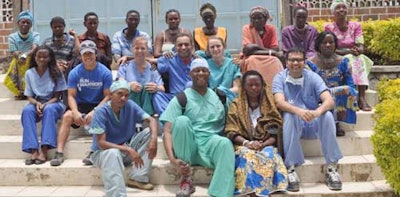 Team members with the postoperative patients at Gitwe Hospital.
Team members with the postoperative patients at Gitwe Hospital.As I completed my fifth year of otolaryngology training at Tufts Medical Center, I had the opportunity to be part of a medical mission team of 15 healthcare workers and volunteers from across the United States to Rwanda, Africa, March 4-11, to perform partial and subtotal thyroidectomies. Jagdish K. Dhingra, MBBS, FRCS, an otolaryngologist from Boston, MA, led the mission team under the auspices of Medical Missions for Children (MMFC).
We travelled to Gitwe, a small mountain village located 50 miles southwest of the capital city, Kigali. Due to iodine deficiency in salt and water, multinodular thyroid goiter is endemic in Rwanda. Local physicians lack the training and are ill equipped to deal with large goiters.
This was Dr. Dhingra’s sixth annual mission to Gitwe, Rwanda, and during this time he has performed more than 100 partial and subtotal thyroidectomies. In the most recent trip, we performed 26 thyroidectomies.
In addition to the thyroid mission, MMFC coordinates an annual cleft lip mission to Gitwe and 13 other annual missions to underdeveloped parts of the world.
 Members of the anesthesia team prepare a patient for surgery at Gitwe Hospital.
Members of the anesthesia team prepare a patient for surgery at Gitwe Hospital.After landing in Rwanda, the journey to Gitwe is a grueling four-hour van ride from Kigali. The team brought all the administrative, anesthetic, surgical, and PACU supplies and medications necessary for surgery with them to Rwanda. The first day in Gitwe consisted of setting up the operating room and PACU and screening patients at Gitwe Hospital. Patients had been screened six months earlier by a surgeon and a nurse. In addition to word of mouth, radio announcements helped us reach remote villagers about our mission. Patients had traveled from many miles away, often walking several hours a day to reach the hospital. The primary complaints were pressure symptoms.
During five days, 26 patients underwent partial or subtotal thyroidectomy. Excision specimens routinely measured more than 5 cm in largest diameter with the largest specimen measuring 12 cm and weighing about 500 grams. Postoperatively, patients stayed in the hospital until drains were removed.
The trip was a unique learning experience and a great success overall. Planning for next year’s mission is already under way.
